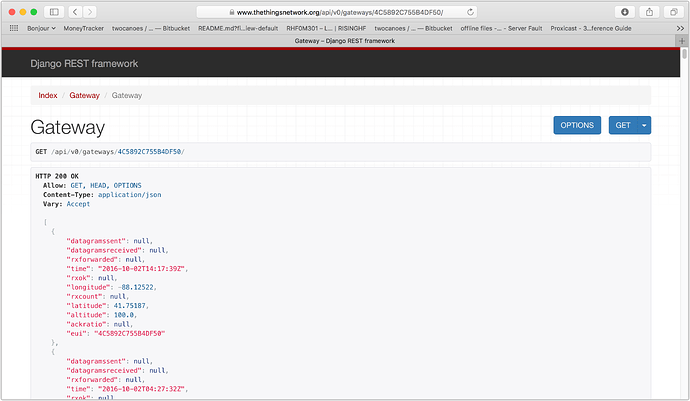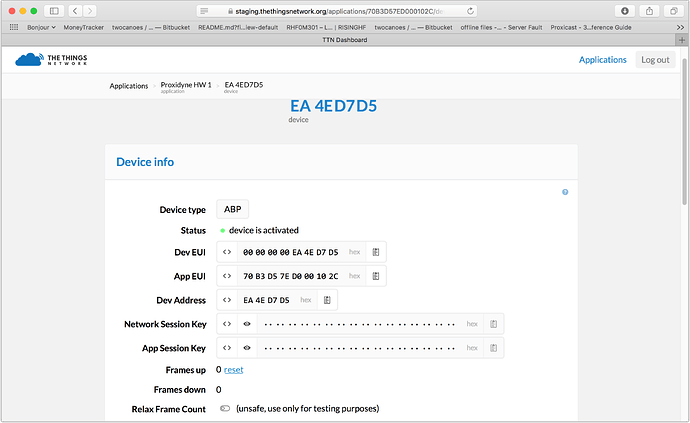I spent some time yesterday doing some LoraWan work, trying to get my gateway set up and have a our sensor post info to The Things Network. I had some successes, but have not gotten a message to appear in The Things Network. Here is what I did:
Following the Wiki for RisingHQ for the gateway, I set up the GPIO pins to the raspberry PI 3 as documented. I used an external power supply for the gateway (as recommended), and an LED turned on to show the gateway was powered. I enabled the SPI interface on the PI. I had some issues with the open source projects that risingHQ until I discovered that there is a 3.2.1 version of lora_gateway and a v2.2.0 version of the packet_forwarder project. I check out the latest for that version and the commands seemed to line up.
The wiki instructions show how to connect to the loriot system, but I kept getting a “lgw_start failed” message:
https://bitbucket.org/snippets/tperfitt/ko7Gj
I gave up on this path after a bit since it doesn’t appear that I need that service running to connect to TTN.
The concentrator (gateway radio board) appears to be detected:
https://bitbucket.org/snippets/tperfitt/aoqGn
I then moved on to configuring the packet forwarder. I configured the frequencies, gps location, and server name in the config files:
https://bitbucket.org/snippets/tperfitt/XgEr4
and then started up the packet forwarder:
https://bitbucket.org/snippets/tperfitt/7oqb9
That seemed to work well, so I registered gateway at TTN network and it updates on their system:
On my way!
I then focused on getting a node to send data. Our sensor has a mode to talk directly to the radio (Microchip 2903) so i gave the command to do that and then I turned on the LoraWan capability:
mac resume
{“debug”,“ok”}
ok
That worked well. I then added a device in the TTN:

I used the ABP since it there was some info on the TTN about how OTAA is not support in the “old” API. Since it was unclear what API I was using, i decided to stick with the ABP mode. I sent the commands to set the keys and connect:
mac set nwkskey FCADD3CFD57FB3E8A10E3953F6F81221
mac set appskey 9EB41E44218BBB8D20257DEE5943EA61
mac set appeui 70B3D57ED000102C
mac set devaddr EA4ED7D5
and then I attempted to join:
mac join abp
ok
accepted
Looking good!
However, when I look at the output for the gateway, there is no change in the output, and when I did a network packet trace, there is no info being sent to TTN. In this article:
https://www.thethingsnetwork.org/forum/t/connecting-to-ttn-using-rn2483/1975
it shows some info similar to what I am seeing but doesn’t resolve the issue. I try to send a random TX:
mac tx uncnf 1 3132333435
ok
mac_tx_ok
But still no activity on the network and nothing shows up in the device on TTN.
I tried the util_pkt_logger in lora_gateway/util_pkt_logger but it does not show any output :
https://bitbucket.org/snippets/tperfitt/qo7bA
So it appears that the gateway is connected to TTN, and the node seems operational, but the gateway radio is not receiving any transmitted packets. I am a bit unclear if the global_conf json configures the radio or if it is simply to report to the server (TTN).
Any anyone have any ideas why the concentrator is no hearing the 2903 and anything I can do to test?
tim

